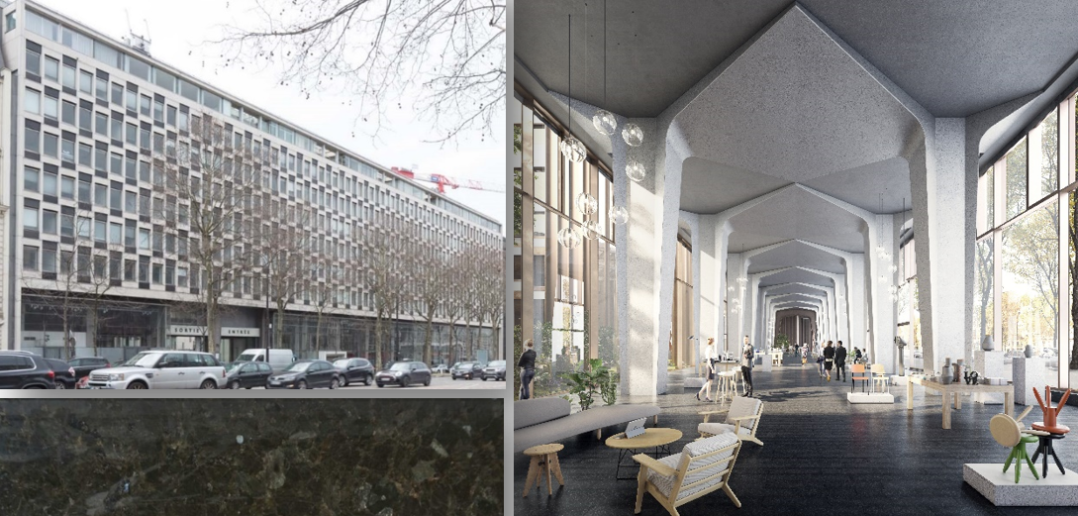The linear economy is currently the standard practice in every sector of our economies. Real estate is no exception. Decades of mass-production created the conditions of the mass-disposal model we live in where throwing away is easier, faster and costless than fixing.
Thankfully, new practices are emerging to break this linear model. The circular economy promotes a resource-efficient economy involving the development of reuse, recycling, pooling, and eco-design. It is a daunting challenge given the current maturity of the sector and the number of players that need to be mobilized.
Yet this is not a slam dunk. The building sector in France generates alone:
-40 million tons of waste each year, which accounts for two-thirds of the waste managed in France
-50% of that waste escapes any material recovery
-56% of a building’s carbon impact over its entire lifespan comes from materials.
Recovering and recycling is indeed a major challenge, but it also leverages untapped opportunities
The circular economy questions the very heart of the real estate value chain and there are many dots to connect. Mainstreaming circular economy implies for instance to :
- Promote the reuse and recycling of resources from its deconstruction sites with a digital marketplace.
- Design buildings that evolve over time and are simpler to deconstruct or transform throughout their lifespan.
- Promote recycled or reused materials in restoration projects.
- Cutting raw material consumption at the source and opting for eco-designed and circular-friendly products.
- Using resources available in buildings in operation (capturing rain water or energy generated by data centers)
- Partnering with newcomers in the building materials sector and local startups.
Fortunately, solutions, methods and tools exist. Real estate certification schemes such as HQE are developing specific criteria on the circular economy. The cradle-to-cradle label is available for development project and the most advanced construction materials groups are used it to promote their circular-friendly products. The Upcyclea platform enables to quickly identify the circularity of the products offered by suppliers or estimate the residual value of the materials to be sold to actors interested in second-hand products.
Learning by doing: Gecina’s feedback
Specialised in refurbishments rather than new buildings, Gecina’s activities have always tried to save as much as possible from the buildings to be renovated. But Gecina’s commitment to the circular economy is taking a step further by cutting raw material consumption at the source and opting for eco-designed products. For instance, 91% of delivered construction waste in 2019 was recycled as materials, much more than the objective set in a European directive as of 2020 (70 %).
L1ve’s building (top photos) is a perfect illustration of this ongoing commitment. This building located in the Paris Grande Armée-Porte Maillot area applies a deceptively simple principle that is, in fact, visionary: re-use rather than discard.
Applying the principles of the circular economy through a partnership with CycleUp by reusing materials, and relying on donations and start-ups specialised in the creation of designer artefacts. Reuse saved 83 tons of waste in total by turning materials into table or chairs for instance or handing out cooking equipment to associations. It accounts for the amount produced by 186 Parisians in one year or 416 tons of carbon emissions avoided.
Rainwater is harvested and reused, solar panels provide energy in its service areas, and geothermal energy is tapped for heating and cooling, reducing energy consumption by 50%.
These actions also permit to make a legacy last: as an example, originally designed in 1966 to display models from Peugeot’s car line-up, the Grande Galerie has been given a whole new lease of life. The Grande Galerie really does connect the past and present, reusing the granite from the old facade in the new floor. The new materials used were selected according to their carbon footprint and place of manufacture, while existing materials were given a new life.



